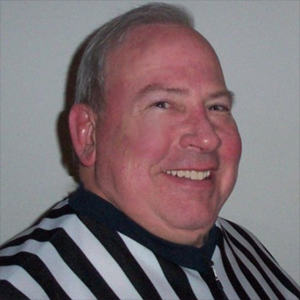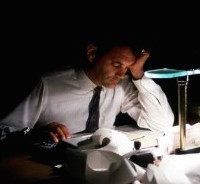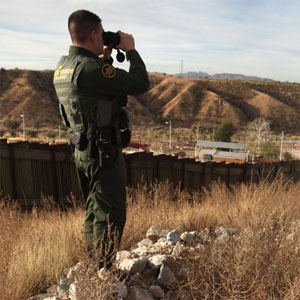
Rndballref
20 Years Experience
Chicago, IL
Male, 60
For twenty years I officiated high school, AAU and park district basketball games, retiring recently. For a few officiating is the focus of their occupation, while for most working as an umpire or basketball referee is an avocation. I started ref'ing to earn beer money during college, but it became a great way to stay connected to the best sports game in the universe. As a spinoff, I wrote a sports-thriller novel loosely based on my referee experiences titled, Advantage Disadvantage
You can stack perpendicular to the throw in boundary line, but if the defense wants to step into a parallel stack room must be made.
I do not have an answer for you, just a possible excuse. NCAA players are so quick and crafty that even veteran officials make errors on traveling calls.
Usually this would be incidental and not called, UNLESS your arms flailing whack the defender.
The table official's book is the final word unless the referee has certain, personal knowledge. So assuming the official has not kept track of how many fouls a player has, if the scorer discovers a counting error of a player;s foul, he should conference with the referee (head of the game officials), explain what happened, and if a player really had 4 fouls it should be explained to both coaches and the player should be allowed to reenter the game.
Investment Banker
 Did you experience the notorious 100-hour work weeks?
Did you experience the notorious 100-hour work weeks?
Border Patrol Agent
 What's the most creative way you saw cartels getting drugs across the border?
What's the most creative way you saw cartels getting drugs across the border?
Videogame Reviewer
 Pick one: Nintendo Ice Hockey, NHL ‘94, or Blades of Steel?
Pick one: Nintendo Ice Hockey, NHL ‘94, or Blades of Steel?
The NBA is different than NFHS because in high school players are supposed to wait until the ball hits the ring or backboard. In the NBA they can move on the release.
A player who alights in the air is considered to have court position from where his feet last touched the court. If the player jumps from out of bounds and touches the ball before he touches the court inbounds, it is a violation. There are 2 exceptions to this rule: 1) a defender who leaps from his front court to intercept a pass and lands in his backcourt, and 2) a defender who leaps from his front court to intercept a throw in and lands in his backcourt.
A referee can call a foul anytime during the game, as long as a foul has been committed. If there was no contact and no unsportsmanlike behavior then no foul should be called.
-OR-
 Login with Facebook
Login with Facebook (max 20 characters - letters, numbers, and underscores only. Note that your username is private, and you have the option to choose an alias when asking questions or hosting a Q&A.)
(A valid e-mail address is required. Your e-mail will not be shared with anyone.)
(min 5 characters)
By checking this box, you acknowledge that you have read and agree to Jobstr.com’s Terms and Privacy Policy.
-OR-
 Register with Facebook
Register with Facebook(Don't worry: you'll be able to choose an alias when asking questions or hosting a Q&A.)